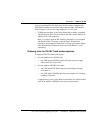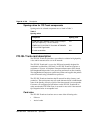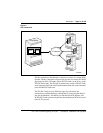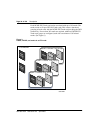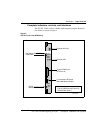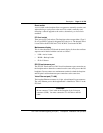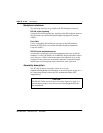
Description Page 35 of
378
ITG Trunk 2.0 ISDN Signaling Link (ISL) Description, Installation and Operation
If a Follower card loses communication with the Active Leader, all its ports
appear busy to the Meridian 1. Alarms are raised by sending an Simple
Network Management Protocol (SNMP) trap to the IP addresses in the SNMP
manager list.
Active Leader and Backup Leader interaction
When a Leader card reboots into service, it sends requests to check
whether an Active Leader card is present. If it receives a
response, this
indicates the presence of an Active Leader card and the rebooting Leader
becomes the Backup Leader. If it does not receive a
response, this
indicates the absence of an Active Leader and the rebooting Leader becomes
the Active Leader.
The Backup Leader monitors the heartbeat of the Active Leader by pinging
the Active Leader’s Node IP. In the event of the Active Leader’s failure (that
is, the Active Leader is not responding to the pinging of the Node IP address
by the Backup Leader), the Backup Leader takes over the Active Leader role,
in order to avoid service interruption. The Backup Leader assigns the Node
IP to its voice interface and announces its new status to all the Follower cards.
The Followers re-register with the new Active Leader and, as a result, a new
Resource Table is built immediately.
The Leader 0 and Leader 1 cards keep their node properties synchronized.
The Backup Leader receives a copy of the
.1 file, containing the
table, from the Active Leader on bootup and when Node Properties are
downloaded to the Active Leader.



